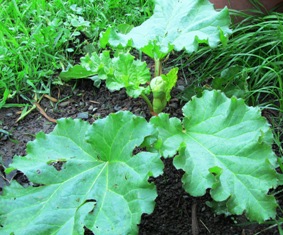Seasonal and Perennial Vegetables
To get your vegetable garden off to a great start, know whether you are planting a cool season- or warm-season plant. Get your veggies into the soil at the right time for optimum results. For warm–season vegetables such as beans, corn, cucumber, eggplant, melons, peppers, squash, and tomatoes, plant as soon as the soil is workable, when frost danger has passed.
Sow seeds directly into the soil or plant seedlings that you’ve started in flats indoors or that you buy at the nursery. The warm-season vegetables will grow and crops often will be ready to harvest before the blazing heat of mid-summer sets in.
Cool-season plants include asparagus, broad bean, beet, broccoli, brussels sprouts, cabbage, carrot, cauliflower, endive, garlic, leek, lettuce, parsnip, pea, radish, and turnip. These can go into the earth mid-summer so the growth spurt to maturation takes place during the fall. Crops can be harvested in the autumn or early spring.
Most vegetable are annuals, but a few are perennial plants, including artichoke, asparagus, chayote, and rhubarb.
Rhubarb is a vegetable, but is often used like a fruit (for example, with strawberries) in a sauce or pie. Plant rhubarb in early spring or late winter. Don’t plan on harvesting stalks until the third spring (giving the plant two complete growing cycles). When harvesting, discard the leaves as they are poisonous.
Asparagus is another plant that needs about three growing cycles, but then will reward with spears for a dozen or more years in the garden. The green feathery top growth is a lovely but when it turns brown in the fall, it needs to be cut to soil level.
Artichokes need a lot of garden space as they grow to about 4 feet high and can double that size in width. Artichokes grown in coastal California, are harvested from September to May. They are the flower buds found at the top of large stalks. The perennial artichoke will need to have the tops cut to about a foot in the fall and folded over the top of the root. The plant then needs heavy mulching to protect it during cold weather.
Chayote is a relative of squash and produces edible fruits along a climbing vine. Plant this perennial in February or March (after the frost danger has passed) near a fence or on a trellis. When you tuck this plant into your garden, be sure to put the sprouted end at the lowest level in the soil, leaving the narrow end exposed. Expect 20 to 30 feet or more of vine.
Before you head off to the nursery to buy plants, consider starting some seeds indoors. Not only will you find it to be economical, you’ll also get a jump on the growing season.
Grow plants from open-pollinated seed. You can then harvest some of the seeds to use again next year. Hybridized seed won’t come true the second year, but open-pollinated seeds will produce plants just like the parent plant.
 Facebook
Facebook Goodreads
Goodreads LinkedIn
LinkedIn Meera Lester
Meera Lester Twitter
Twitter





